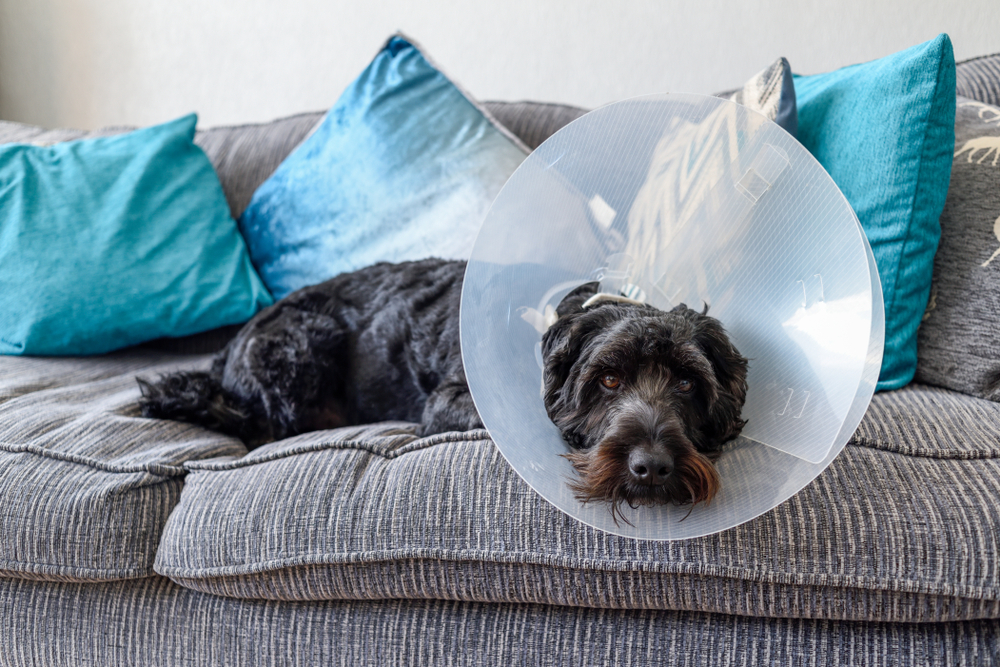Curious pets are notorious for eating items they shouldn’t, especially when they are puppies or kittens and intent on exploring the world with their mouths. However, your pet may ingest an object that cannot pass through and blocks their gastrointestinal (GI) tract, while other items, such as older pennies or lead material, can also cause toxicity. An object that becomes lodged in your pet’s GI tract can perforate the intestines, or create a severe blockage that causes intestinal necrosis. Learn how to identify a GI foreign body in your pet to ensure they receive immediate treatment to prevent potentially life-threatening complications.
What items are common gastrointestinal foreign bodies in pets?
A GI foreign body can be any inedible object or food that your pet eats but cannot eliminate. Some of the most common foreign bodies found in pets include:
- Socks
- Strings
- Bones
- Rubber toy pieces
- Mulch
- Stuffing from toys or bedding
- Rocks
- Metal objects
- Trash can items that taste or smell like food (e.g., aluminum foil, wrappers)
In some cases, normally ingested items can become a GI blockage. For example, pets may get into their food supply and eat so much that a blockage results. Or, your cat may excessively lick and groom themselves, and ingest a large amount of fur that becomes a massive, unmovable hairball.
What clinical signs does a gastrointestinal foreign body cause in pets?
GI foreign bodies can cause various signs based on the blockage location in the GI tract, time the item has been lodged, and if additional complications (i.e., toxicity) are likely. The most common signs in a pet who has developed a GI obstruction include:
- Vomiting
- Anorexia
- Nausea
- Diarrhea
- Abdominal pain
- Lethargy
If your pet swallows a string or ribbon, you may be able to see the offending material wrapped around the base of their tongue or protruding from the anus. Never attempt to pull the material out yourself, as it can slice through your pet’s GI tract, potentially causing sepsis.
How is a gastrointestinal foreign body diagnosed in pets?
A physical exam, fecal testing, and blood work are typically performed to rule out other causes for your pet’s vomiting, diarrhea, and associated signs. Partial obstructions can occur, making diagnosis challenging without additional testing. Abdominal X-rays are the most common test performed to help detect an obstruction. In most cases, the foreign object, unless made of metal, cannot be seen, but evidence of an obstruction can. Fluid or gas building up behind or within the foreign object may be visible, and the unusual gas patterns or GI anatomy will provide valuable clues. In some cases, a barium study or abdominal ultrasound may be necessary to reach a final diagnosis.
How is a gastrointestinal foreign body removed?
In a perfect world, the foreign object would be located in the esophagus or stomach, and be small enough for removal with an endoscope. However, sharp or large objects need to be removed surgically through an incision in the stomach or intestinal tract. Strings, ribbons, and other linear foreign bodies can bunch up in the intestinal tract and require multiple incisions to remove string pieces and prevent further GI tract damage. However, postoperative issues, such as incision dehiscence (i.e., reopening), are possible following multiple incisions, especially if the GI tract is inflamed and irritated.
What can I expect after my pet has a foreign body removed?

A foreign body surgery is often a major abdominal surgery, and your pet may take several days to a week to begin feeling better. Recovery is faster in simple, straightforward cases, such as a smooth item stuck in the stomach, than in cases where intestinal tract sections need to be resected. Pets generally begin feeling better after the foreign object is removed, because the pressure is relieved, but they may feel nauseous and refuse to eat for several days after the surgery because the foreign body irritated their GI tract. Pets frequently regurgitate food and fluid, and may not defecate regularly following surgery. Keeping your pet hydrated with adequate nutrition is a critical part of their recovery process, so ensure you closely monitor their food and water intake.
If your furry pal has a penchant for eating things they shouldn’t, they may end up with a GI foreign body. Unexplained vomiting and diarrhea may indicate your pet has eaten an object that has become blocked, which means a trip to a Neighborhood Veterinary Centers hospital in Southeast Texas is in order. Contact our team to schedule an appointment as soon as possible.






Leave A Comment